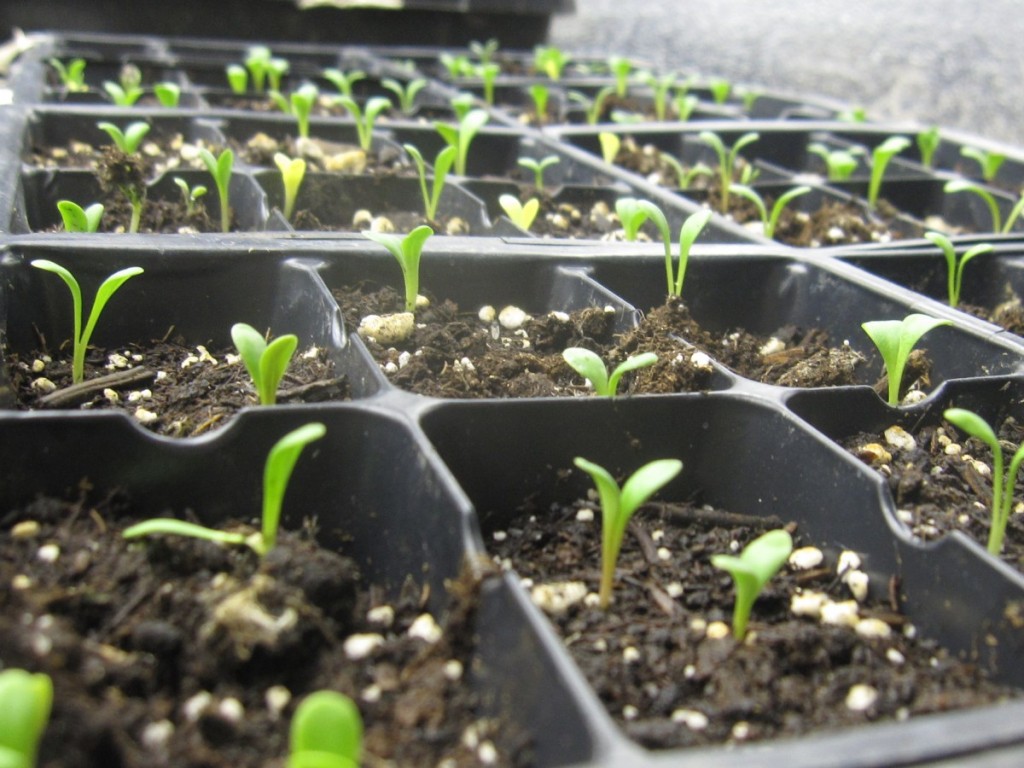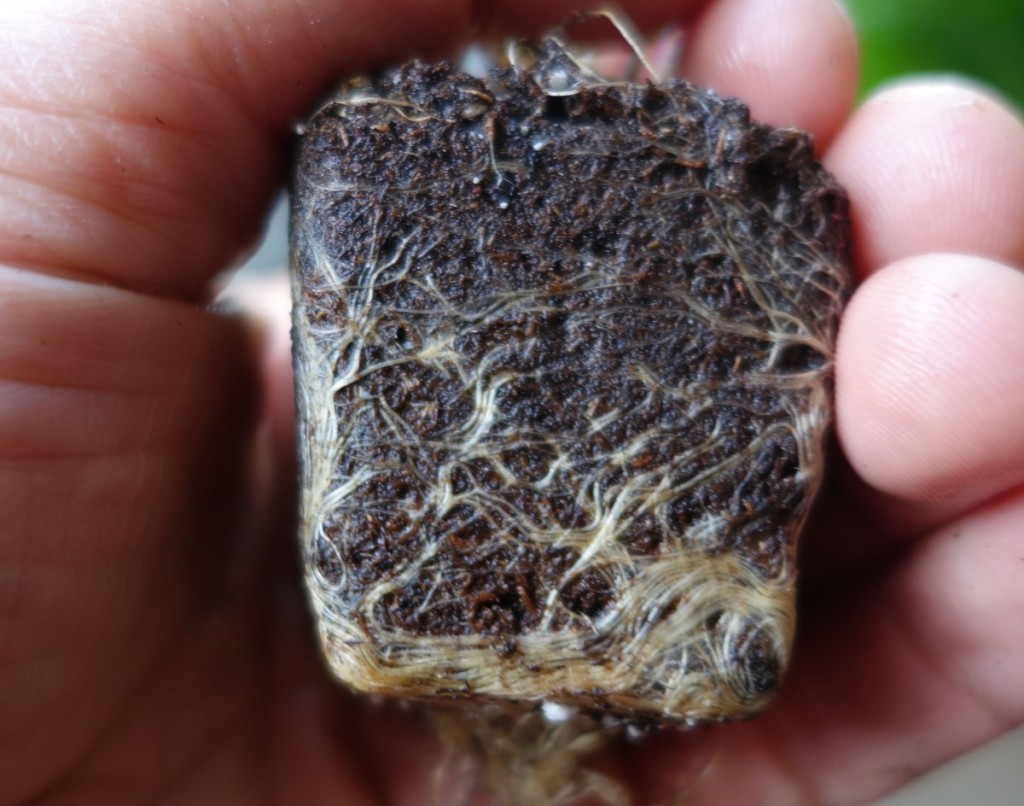As a beginning gardener I learned that to give plants like tomatoes and peppers more time to grow and produce the largest possible crop, it was best to start the seeds early indoors.
 As soon as I learned that, I wondered: Well, if starting my tomatoes 6-8 weeks before transplanting them outside is good, surely 10 weeks would be better, right? Or 12? Or 16?
As soon as I learned that, I wondered: Well, if starting my tomatoes 6-8 weeks before transplanting them outside is good, surely 10 weeks would be better, right? Or 12? Or 16?
Turns out, earlier isn’t always better, and here are some of the reasons why.
First, you probably don’t have enough light. If, like most home gardeners, you are starting seeds under florescent bulbs, it is difficult to give sun lovers like tomatoes and peppers enough light. Light intensity drops off rapidly as you move away from the bulbs, so you know to keep the bulbs right above your seedlings. This works great when the plants are small, but as they grow it becomes very difficult to give both the tops and the bottoms of the seedlings enough light. The result is dying lower leaves and spindly, unhealthy growth.
 Secondly, you are almost certainly going to get some crappy root systems. If you’ve followed this blog for a while, you’ve no doubt read Bert and Linda talking about all the potential problems with the root systems of container grown trees and shrubs. Well, most of the same problems develop with other plants grown in small containers. The roots start circling and they are slow to grow out of the rich soil of the container and into the native soil around them once transplanted into the garden. The longer your transplants grow indoors, the more likely they are to develop problematic root systems. Keeping transplanting them up to larger and larger containers can help mitigate the problem, but that quickly takes up far more space than most home gardeners have for there seedlings.
Secondly, you are almost certainly going to get some crappy root systems. If you’ve followed this blog for a while, you’ve no doubt read Bert and Linda talking about all the potential problems with the root systems of container grown trees and shrubs. Well, most of the same problems develop with other plants grown in small containers. The roots start circling and they are slow to grow out of the rich soil of the container and into the native soil around them once transplanted into the garden. The longer your transplants grow indoors, the more likely they are to develop problematic root systems. Keeping transplanting them up to larger and larger containers can help mitigate the problem, but that quickly takes up far more space than most home gardeners have for there seedlings.
How big and impact that circling root system will have on the health of the plant varies by species. My personal experience growing zinnias, for example, is that they handle circling, pot-bound roots so poorly that plants from seeds sown directly in the garden quickly over-take and out-perform plants started weeks earlier indoors.
So follow the recommendations for the timing of seed starting. It really does work better. You should be able to get advice on when to start seeds from the catalogs you are shopping, extension offices, or you can use Margaret Roach’s excellent seed sowing calculator.
If you DO decide that earlier is better, that you can provide the light and generous pot sizes to avoid problems, there’s no harm in giving it a shot. But if you do, try starting a second batch at the later, recommended, time and growing the two side-by-side in the garden so you can really compare and see which perform best in the actual conditions of your garden, and if all that extra time and space under your lights or in your greenhouse was really worth it.
Joseph Tychonievich
Good advice if you are growing vegetables, but for many perennials, now is a good time to start them. Many grow much slower and the extra time inside is not an issue.
Good point — timing depends a lot on the crop involved.
Thank you for the podt – I will repot the tomatoes.